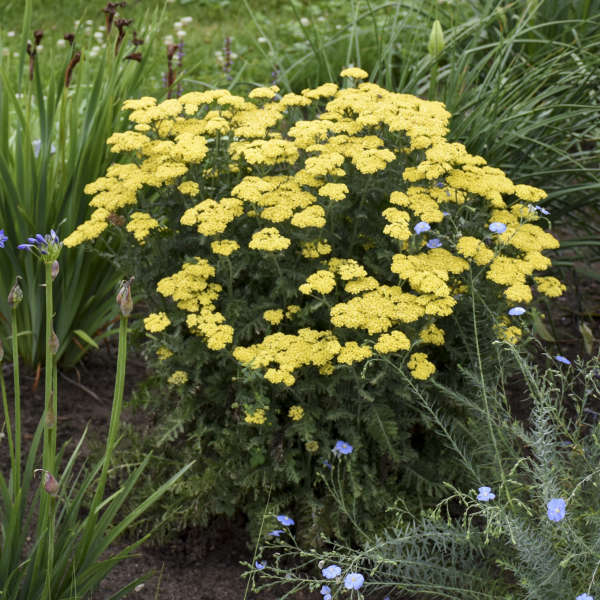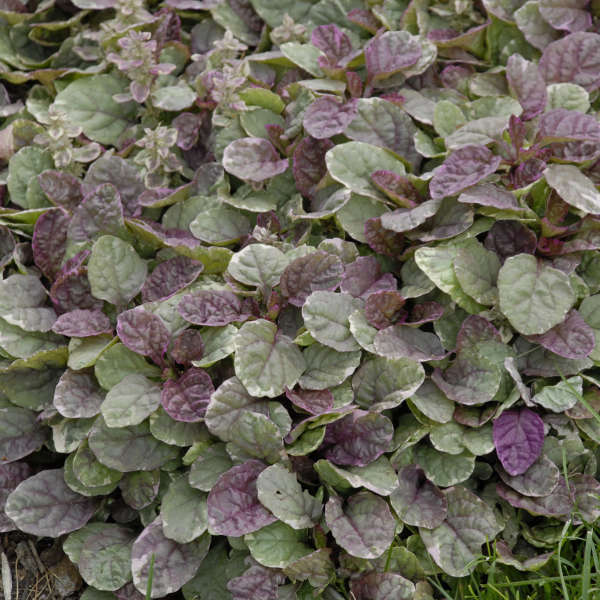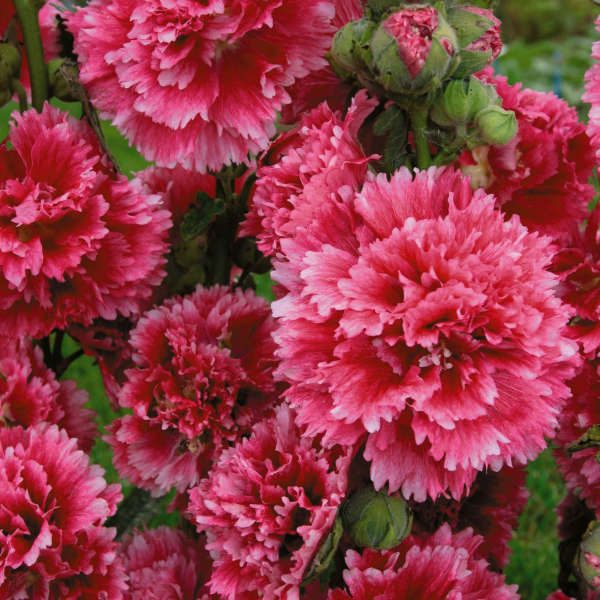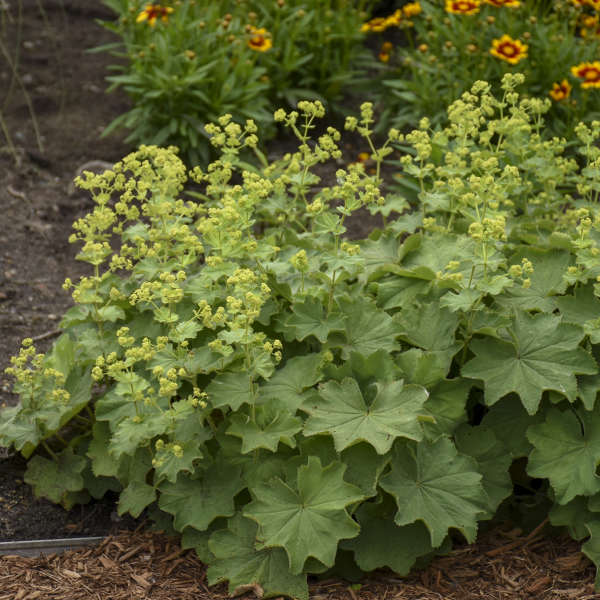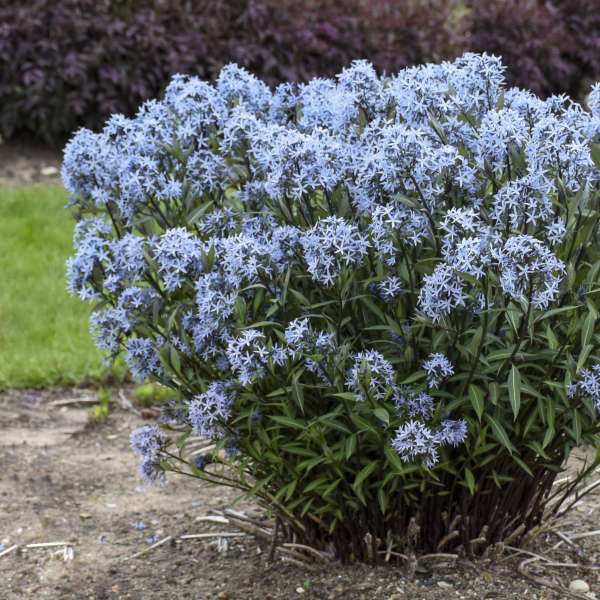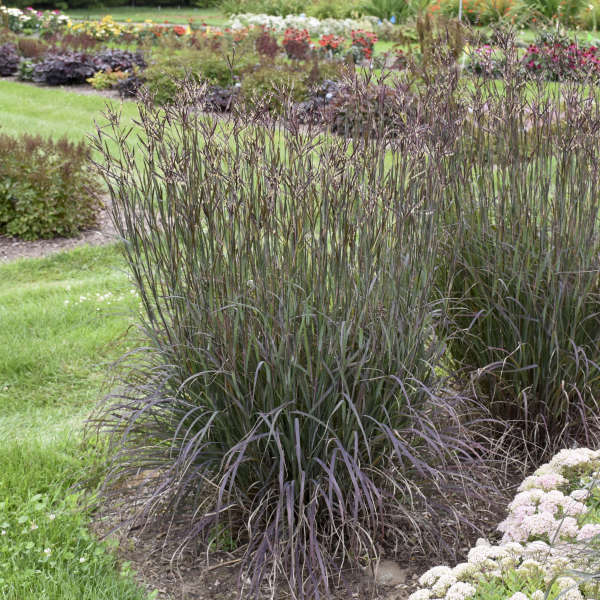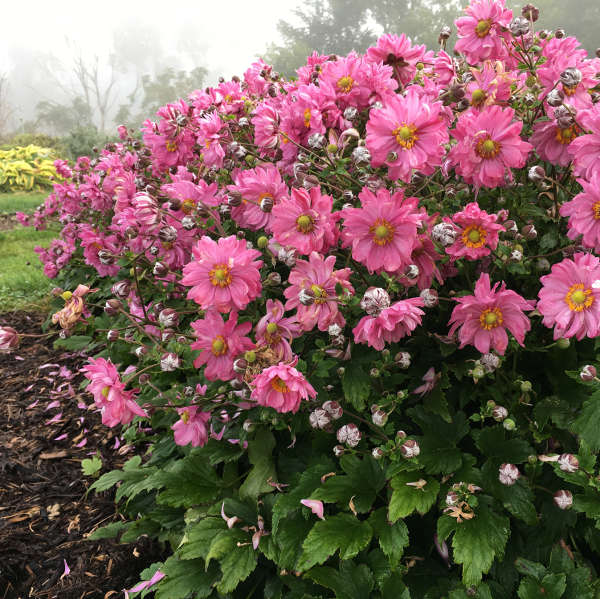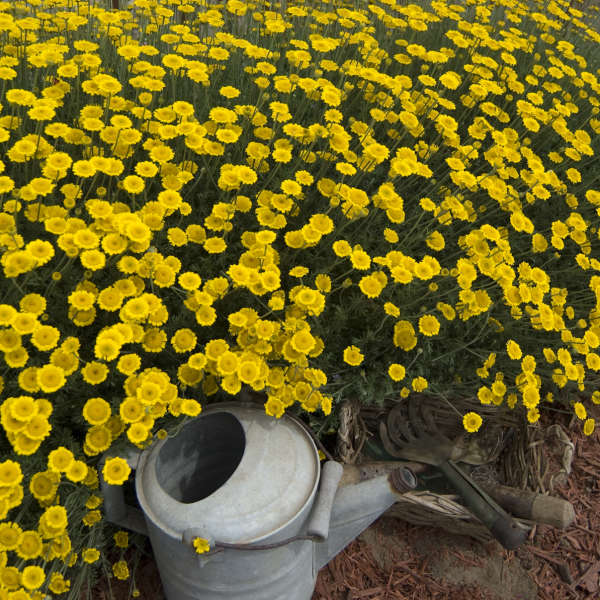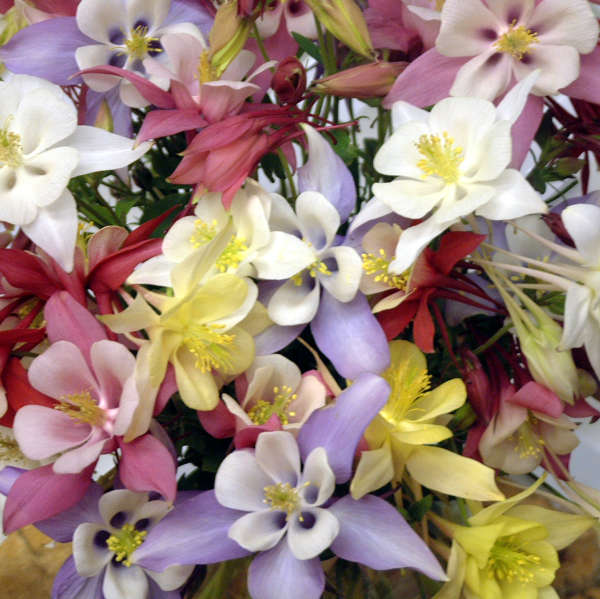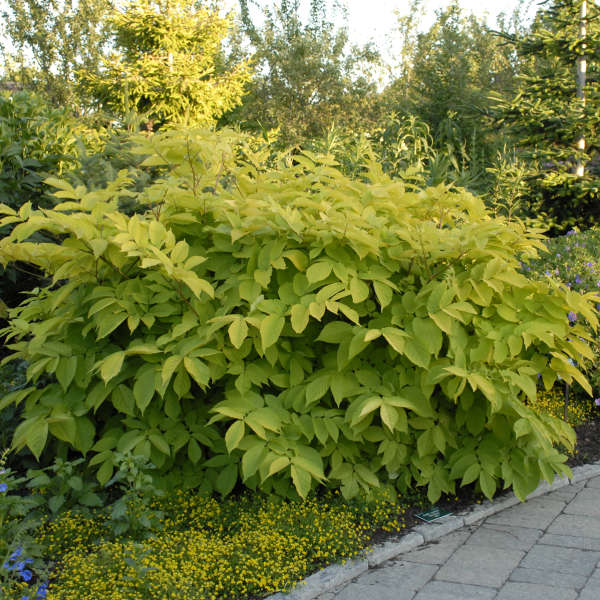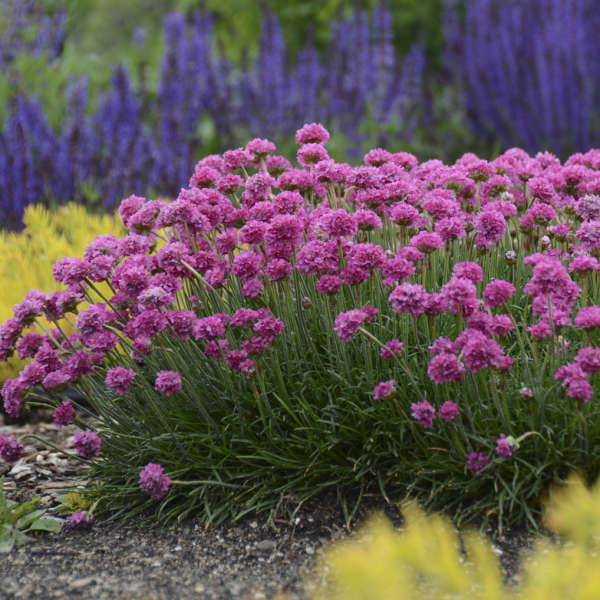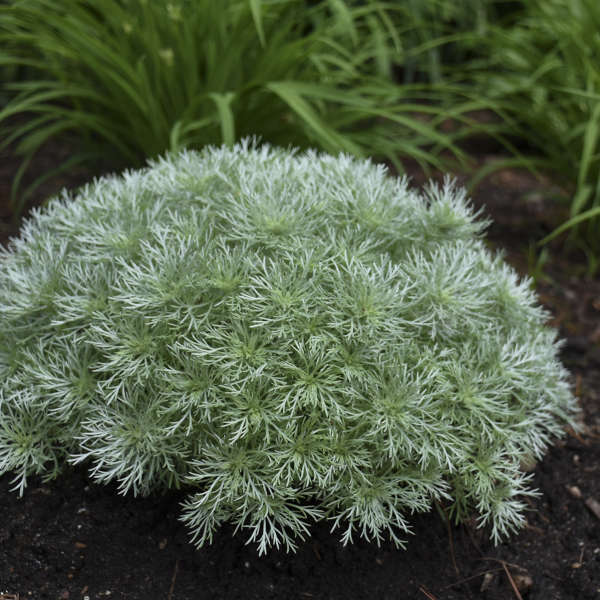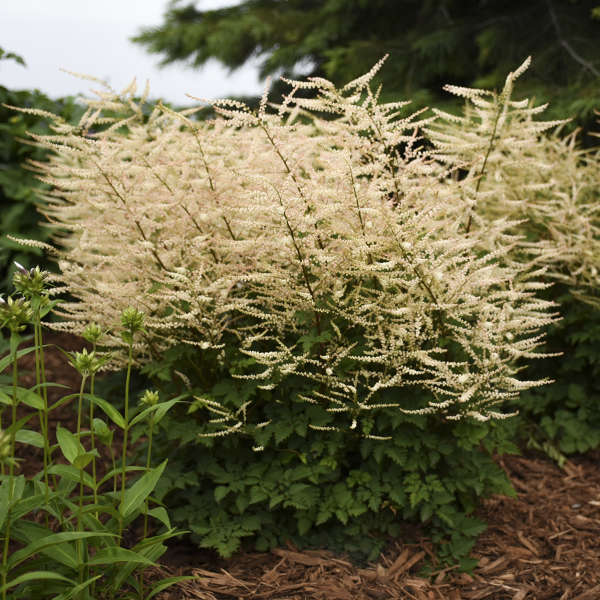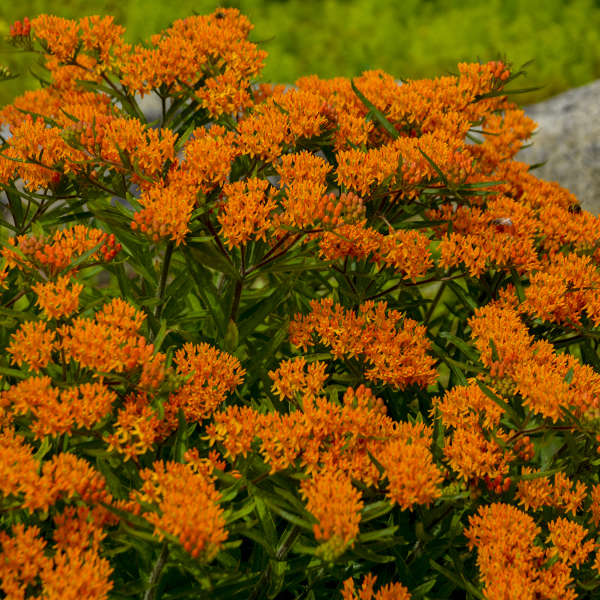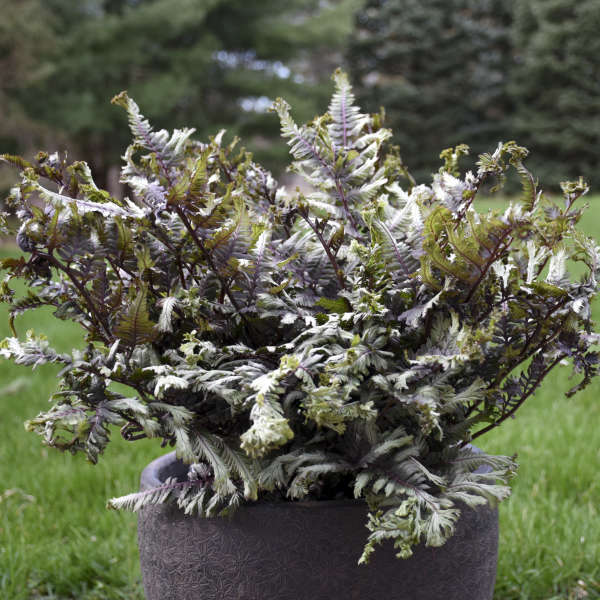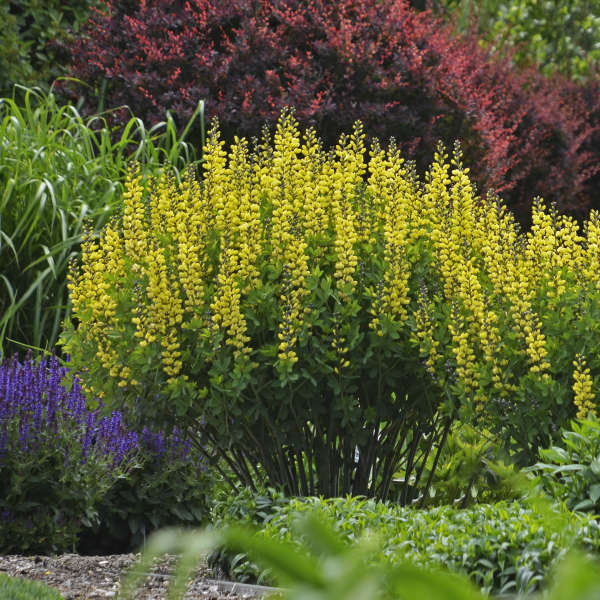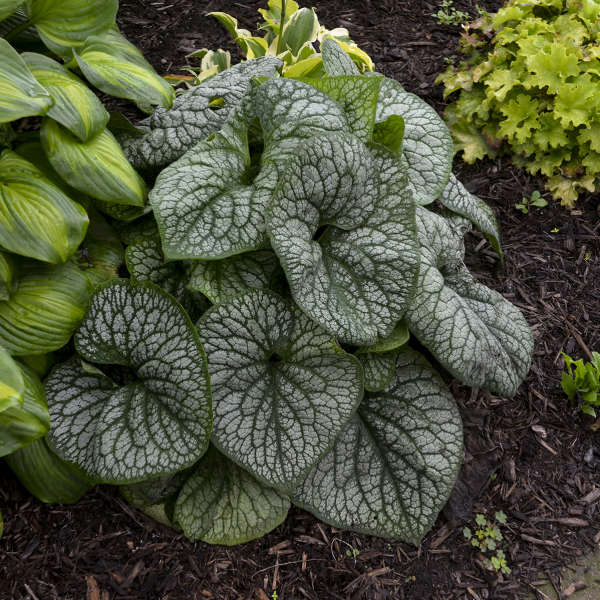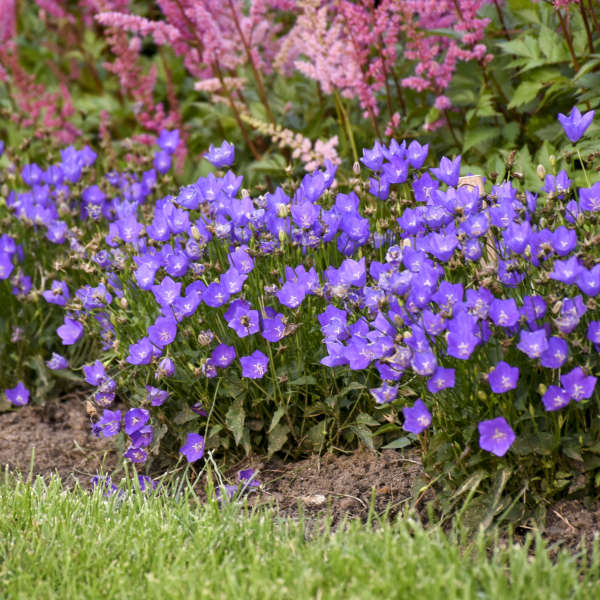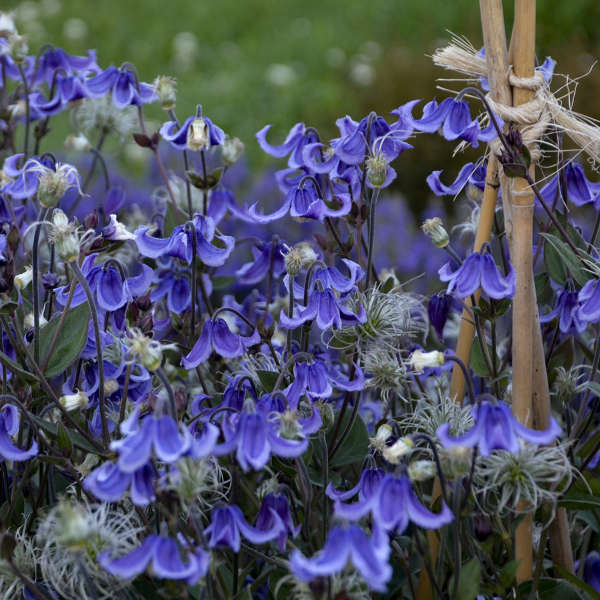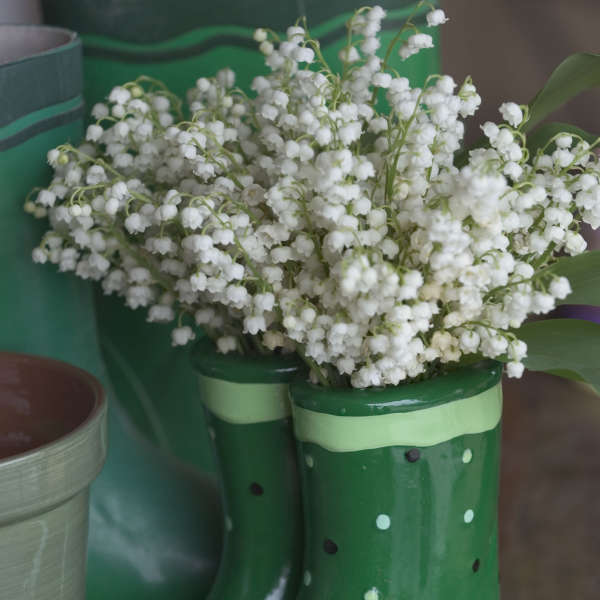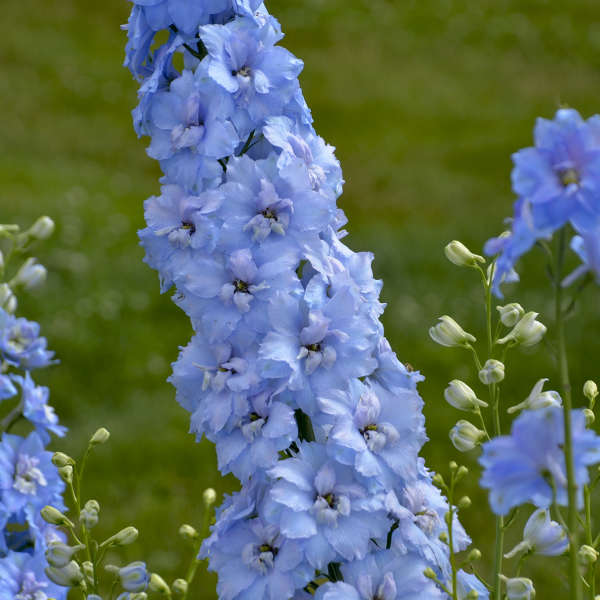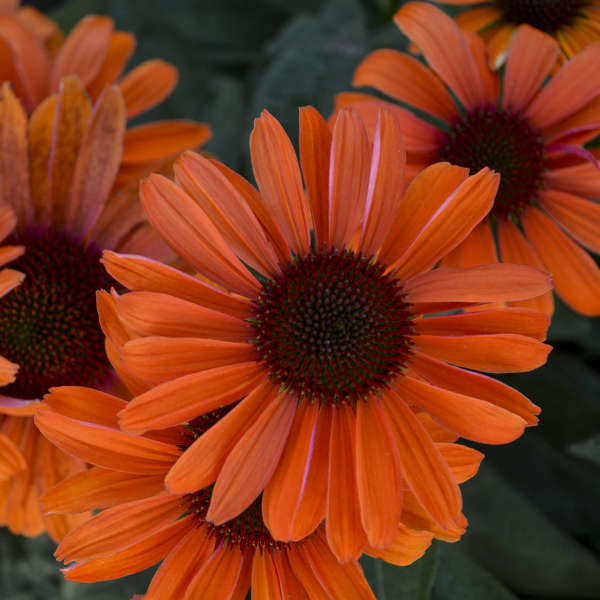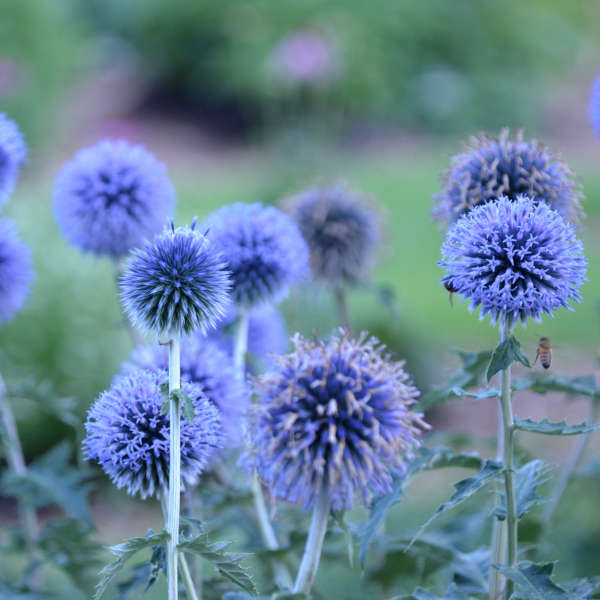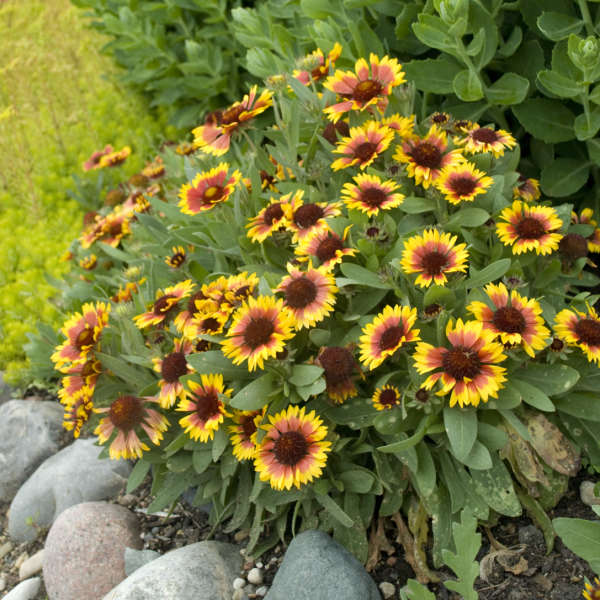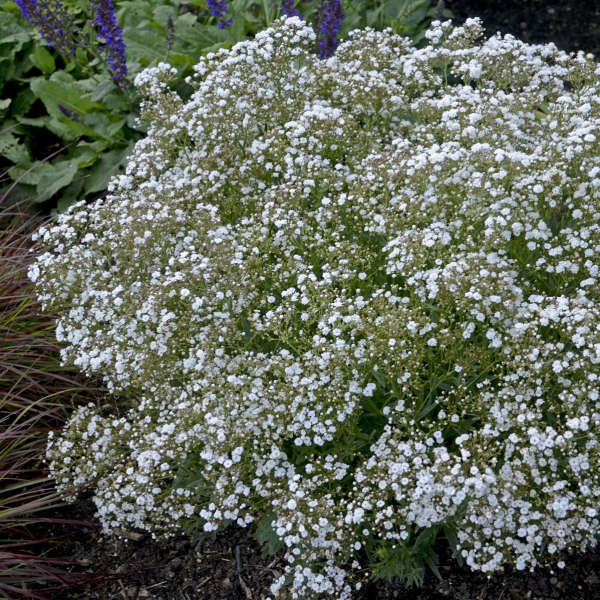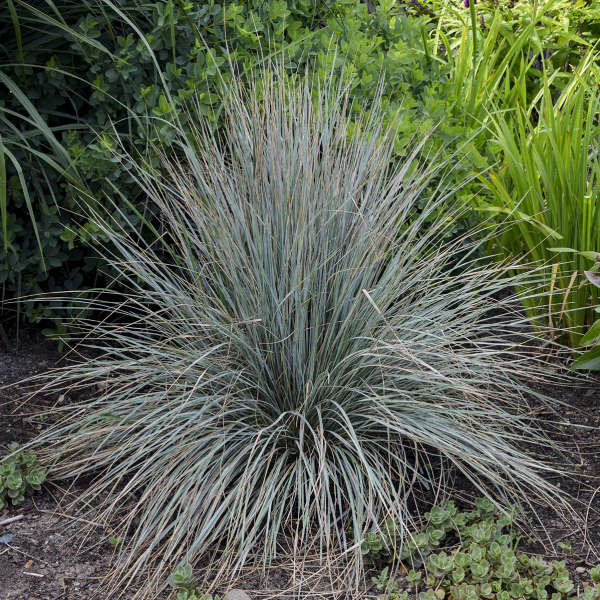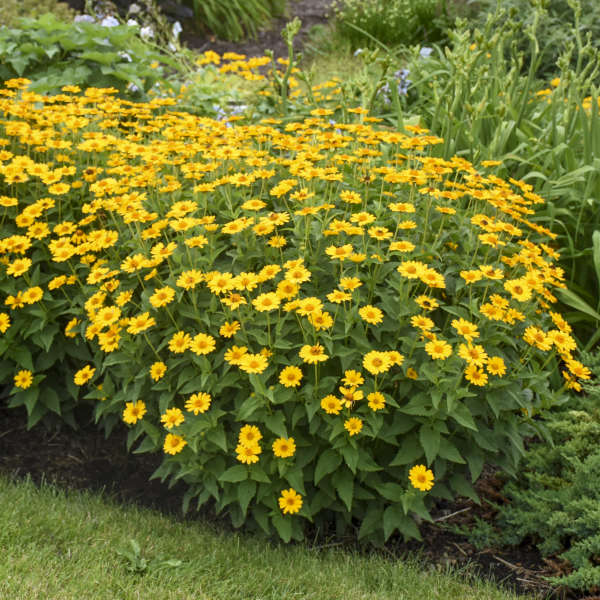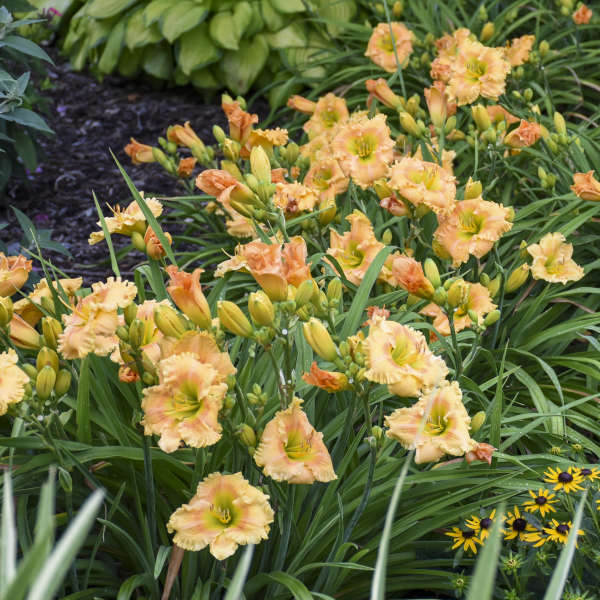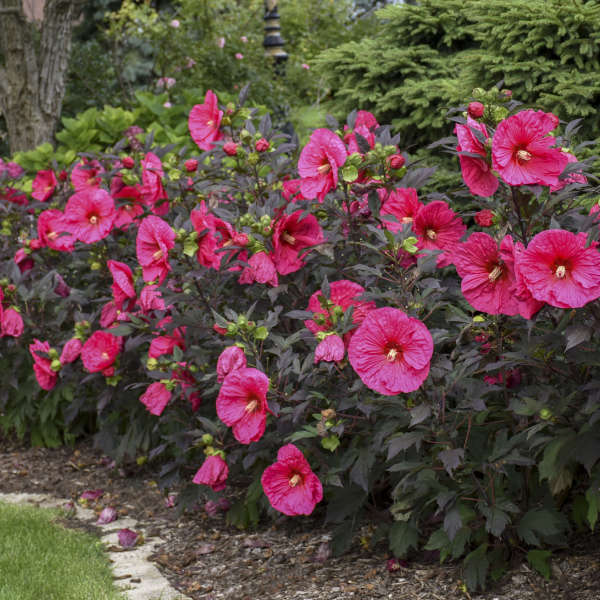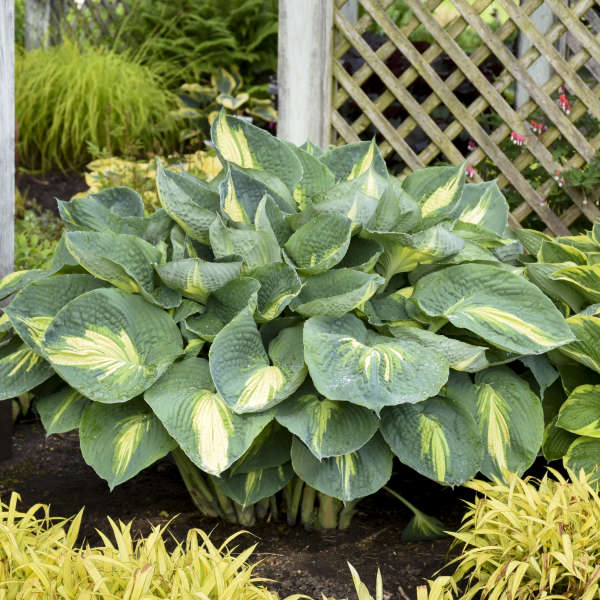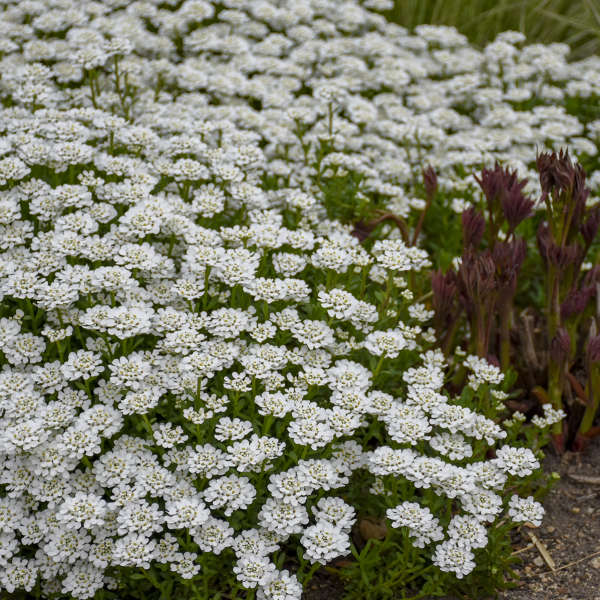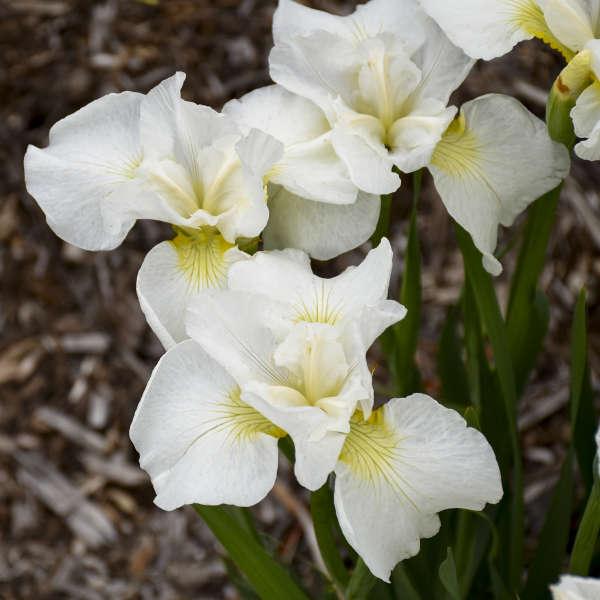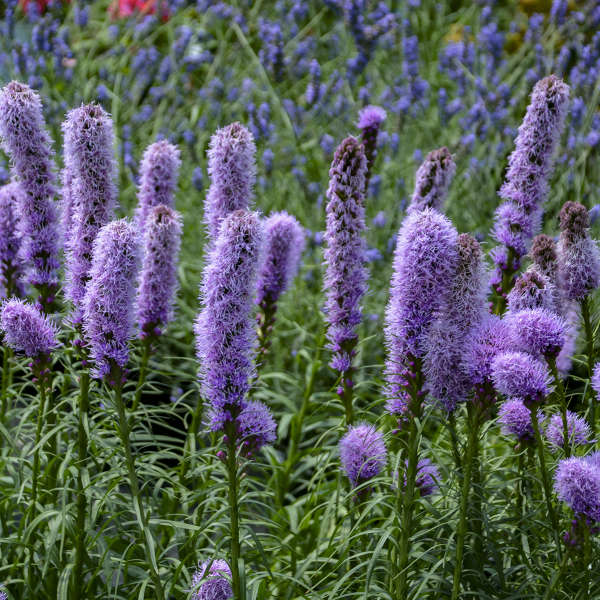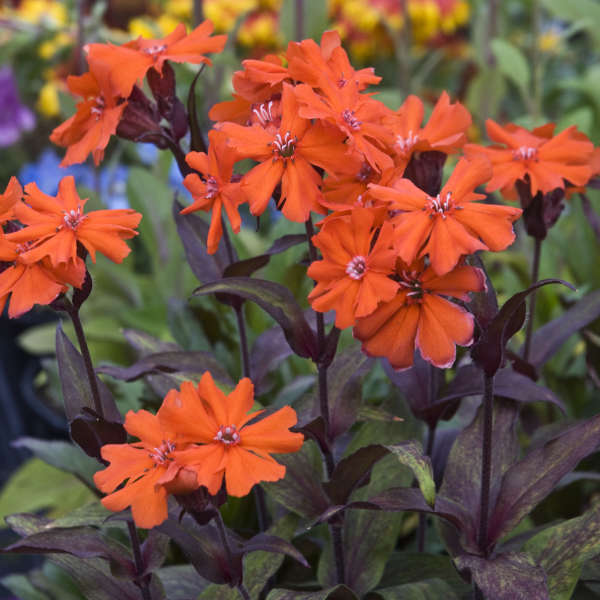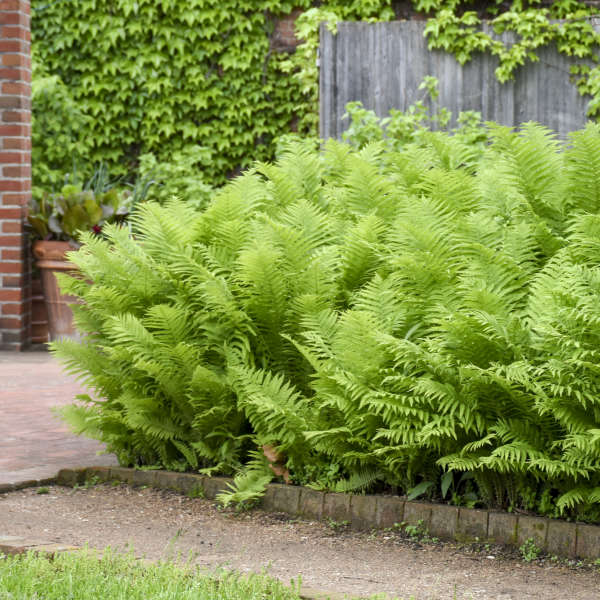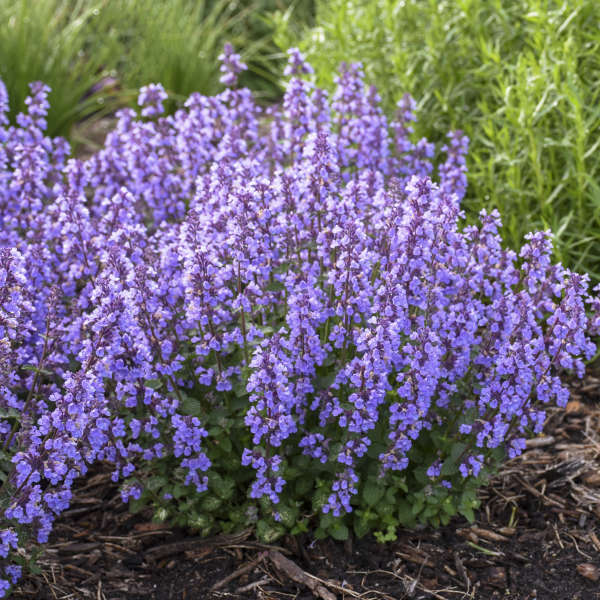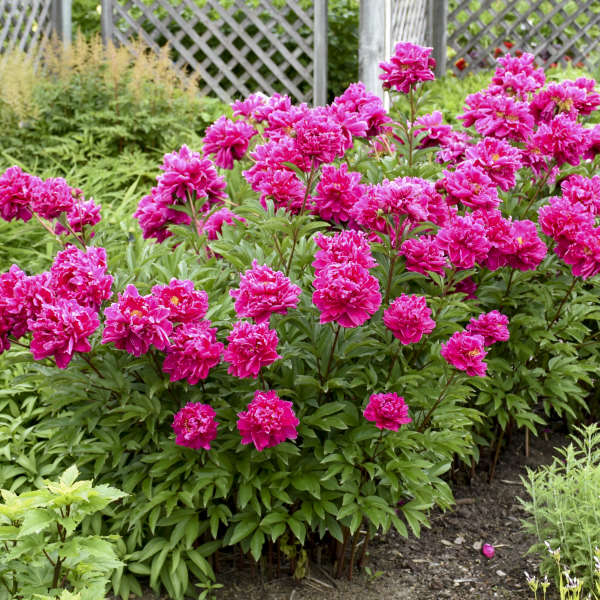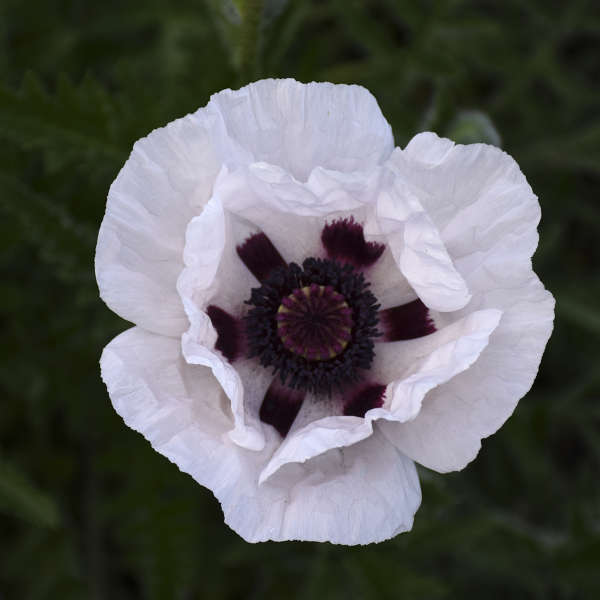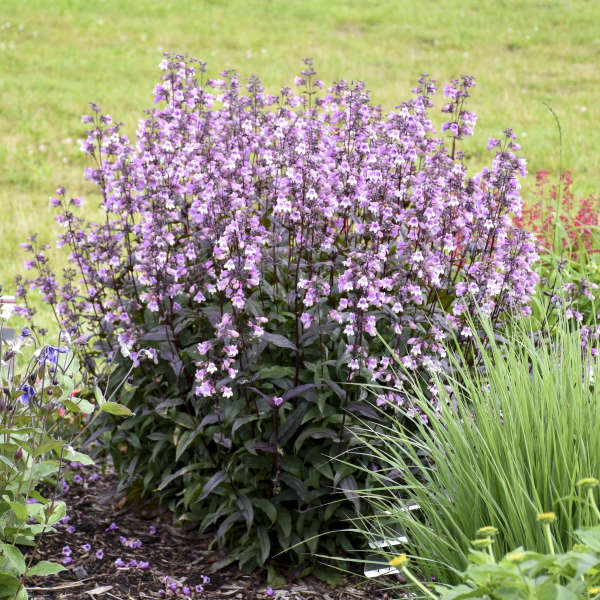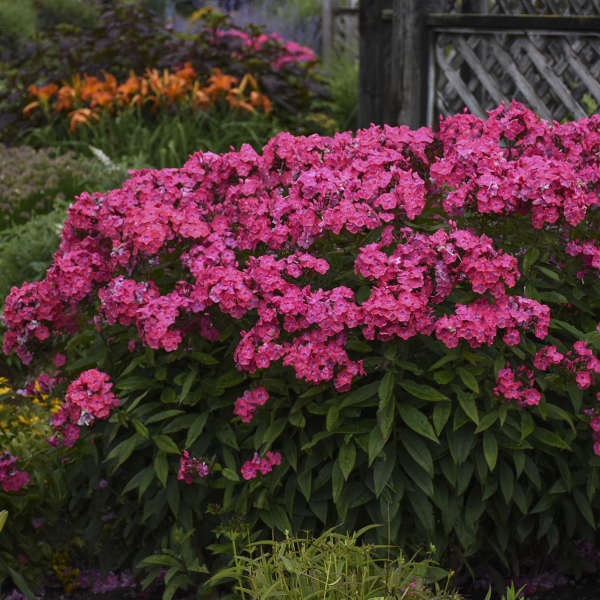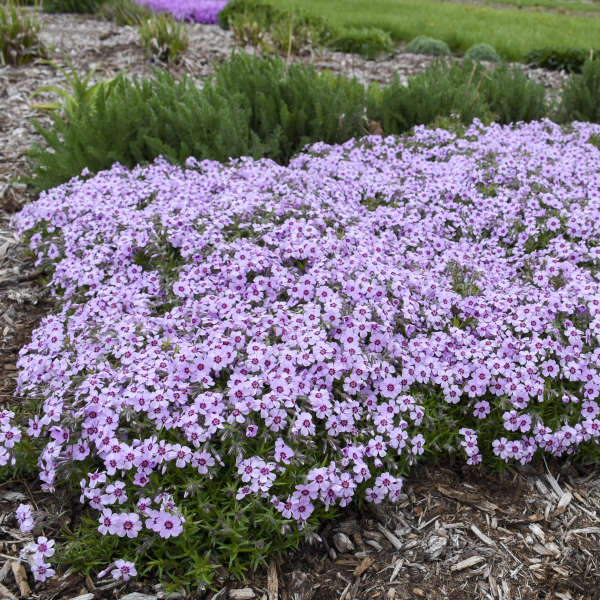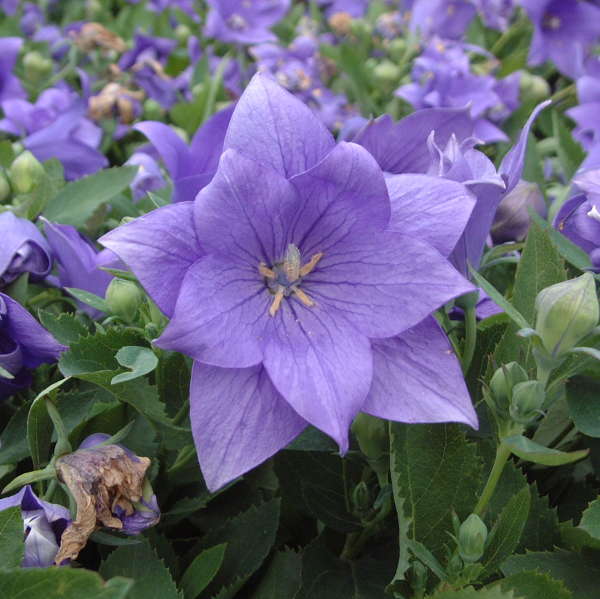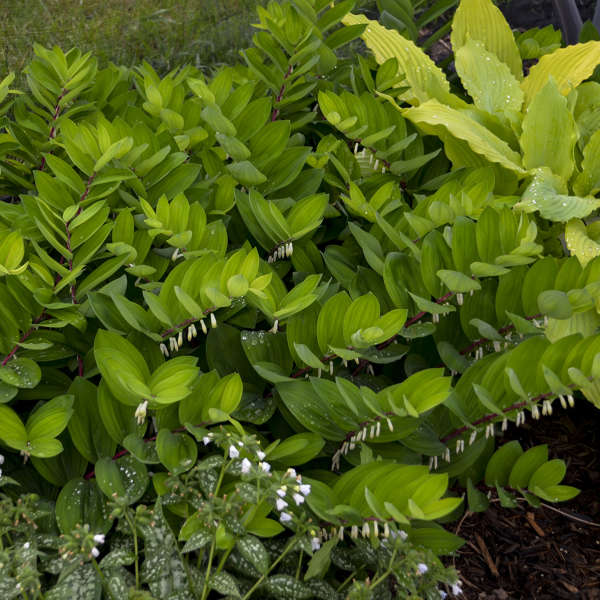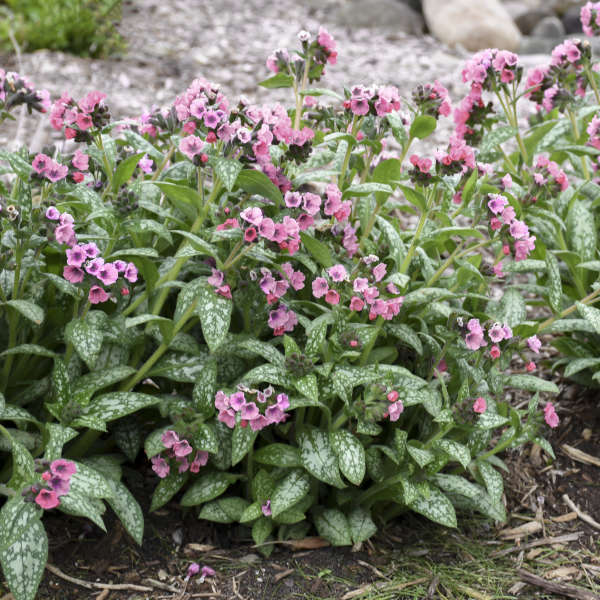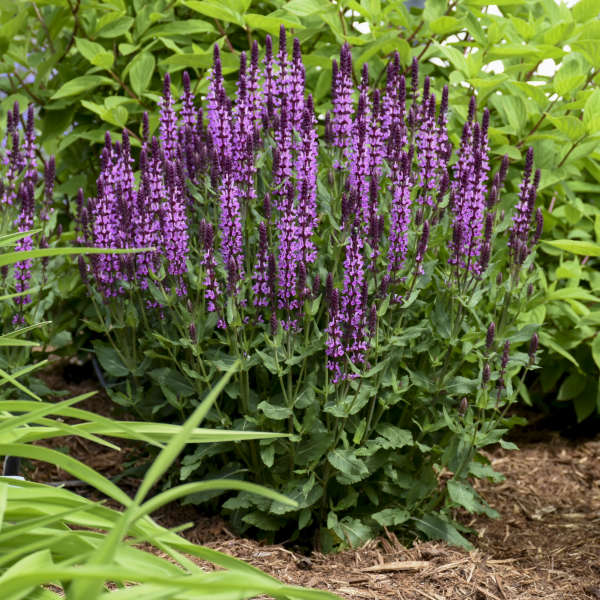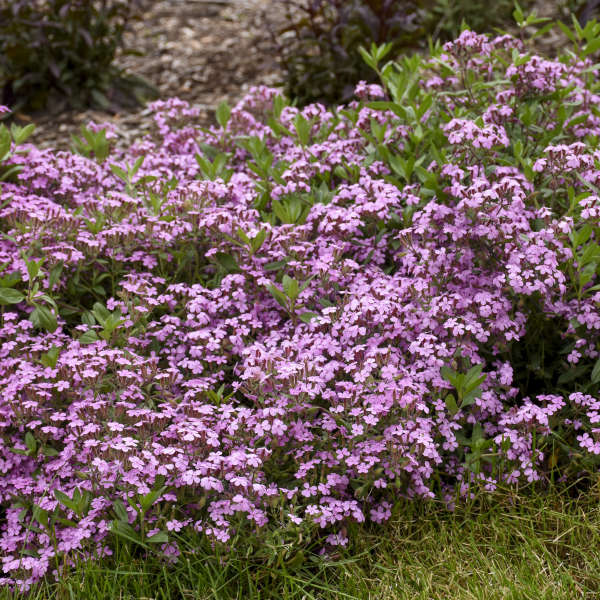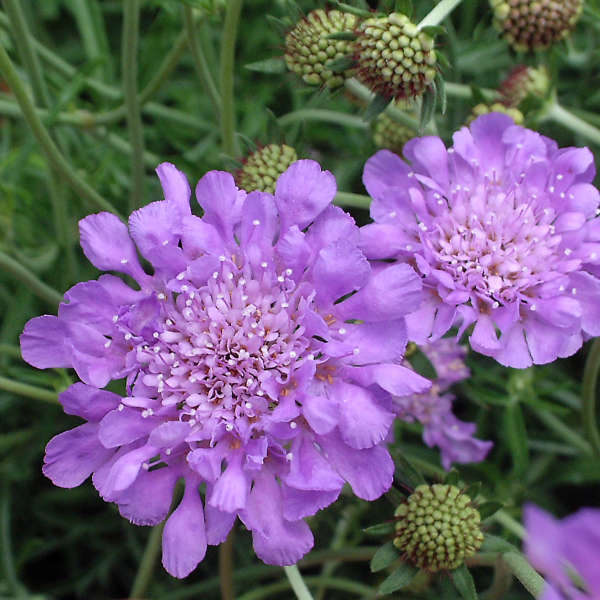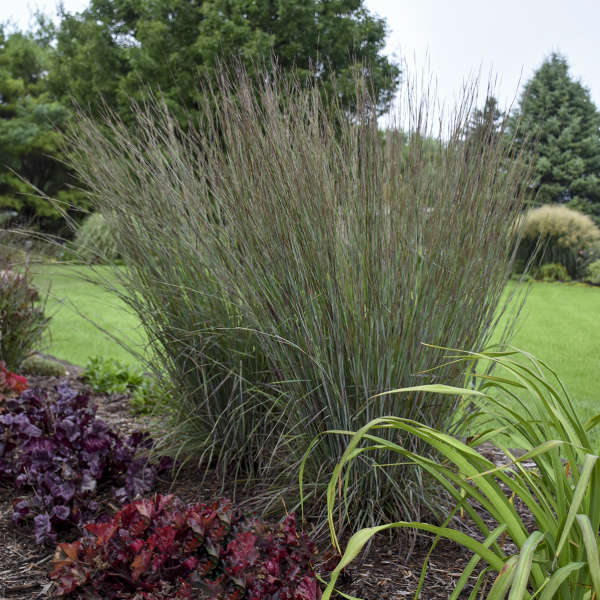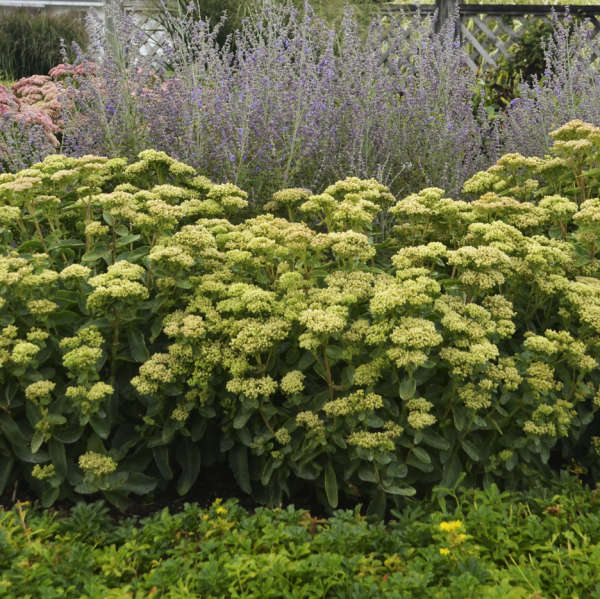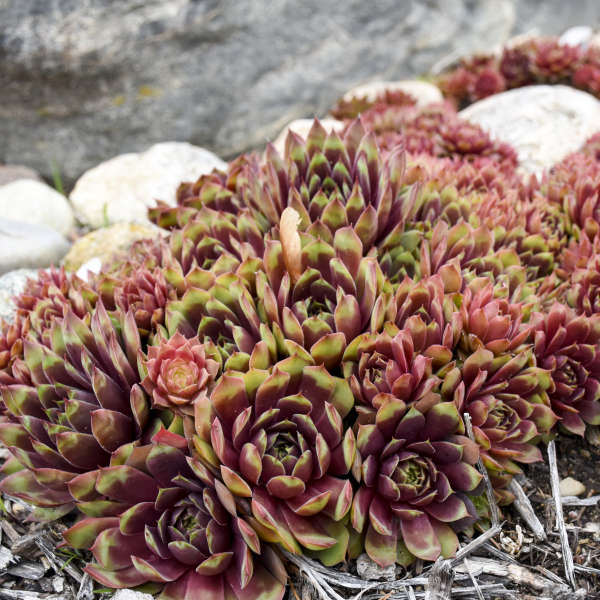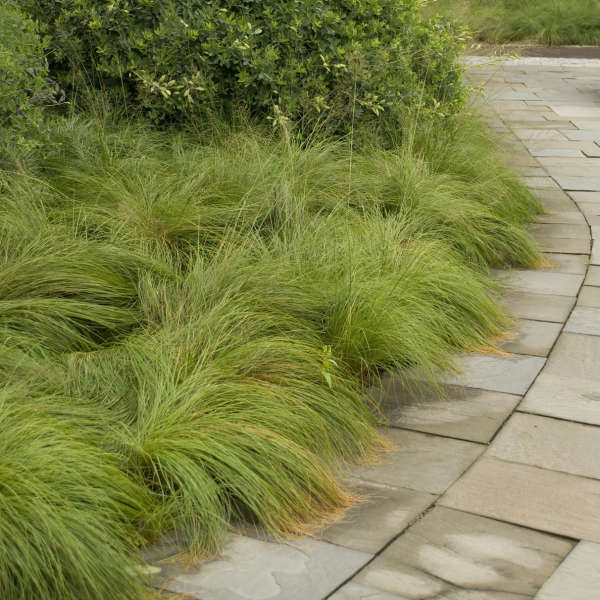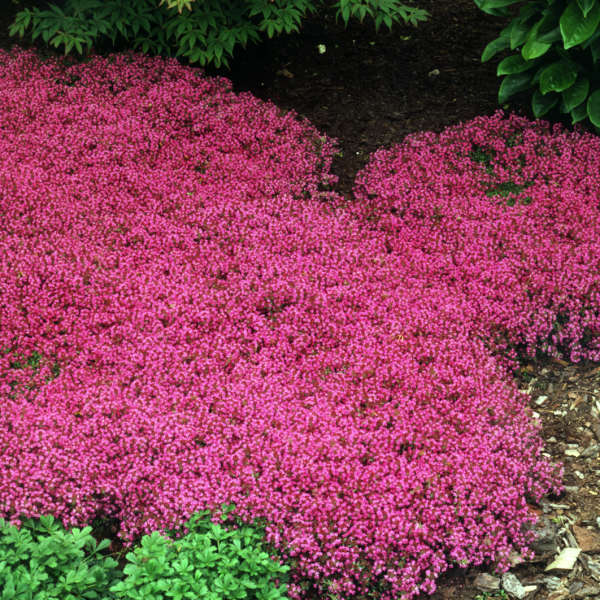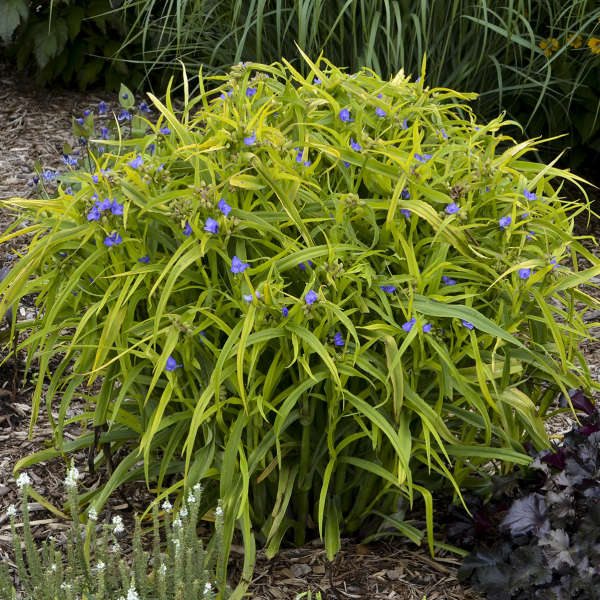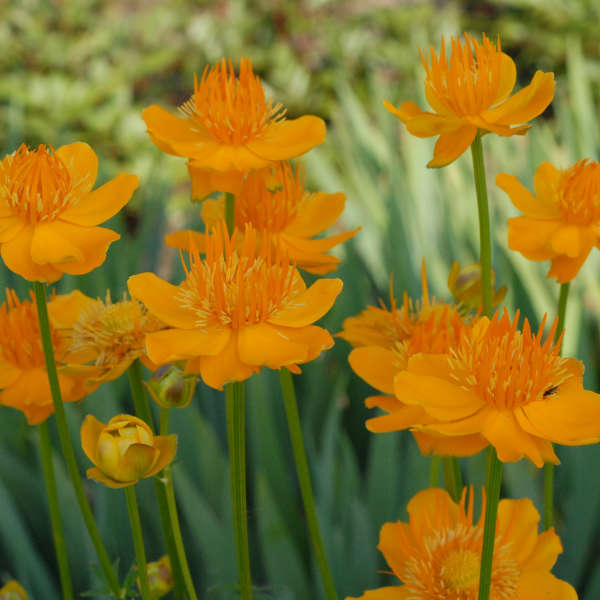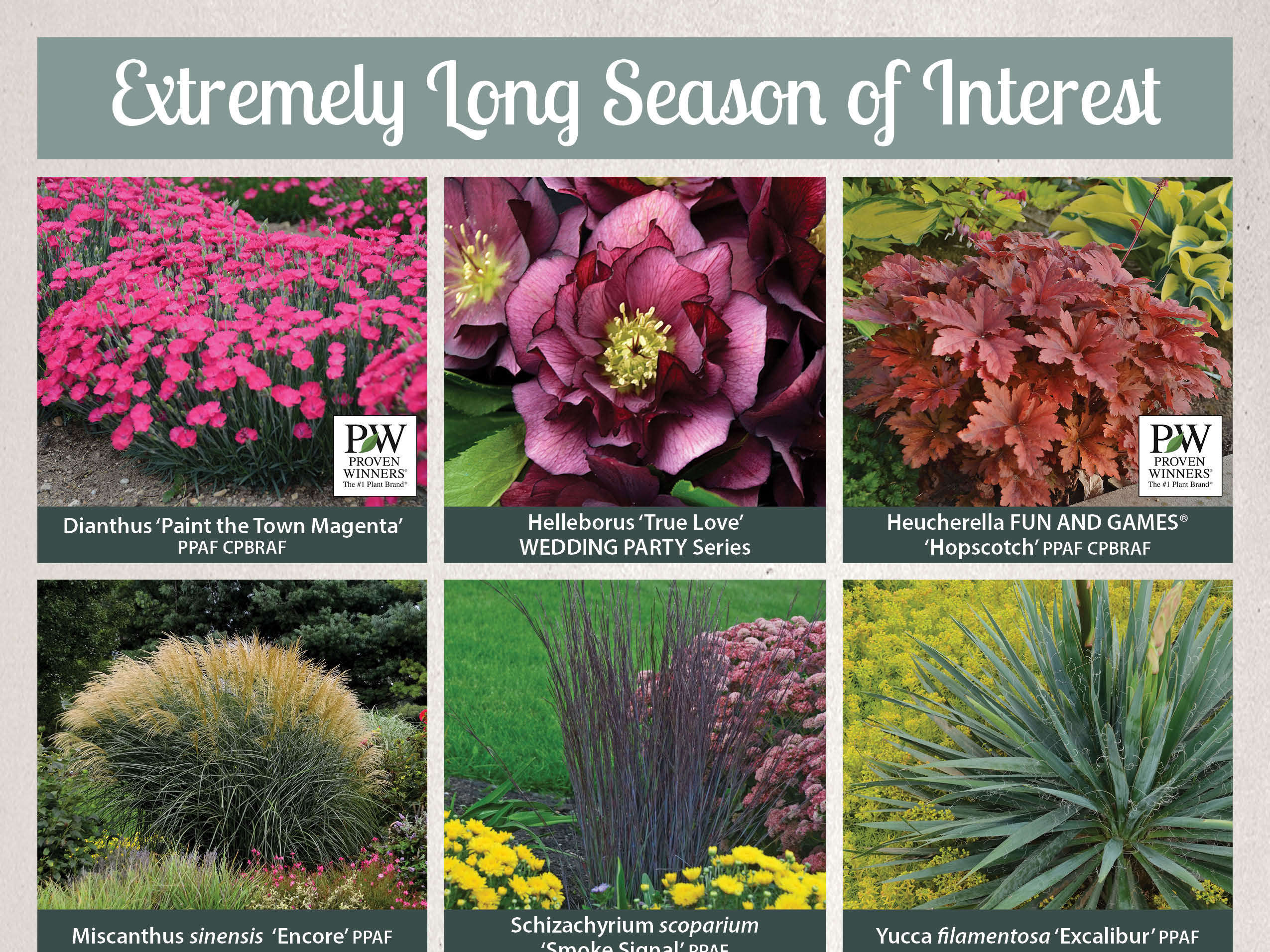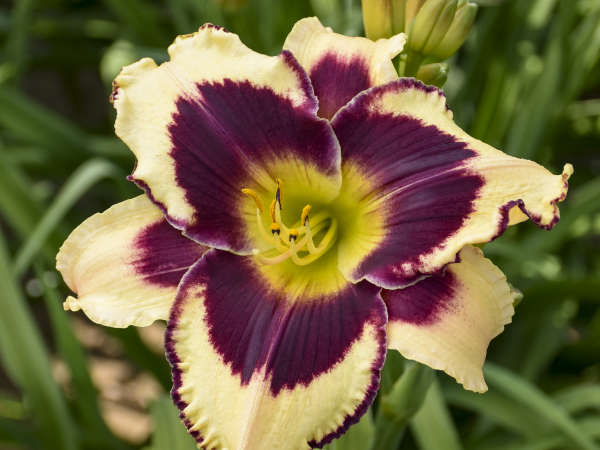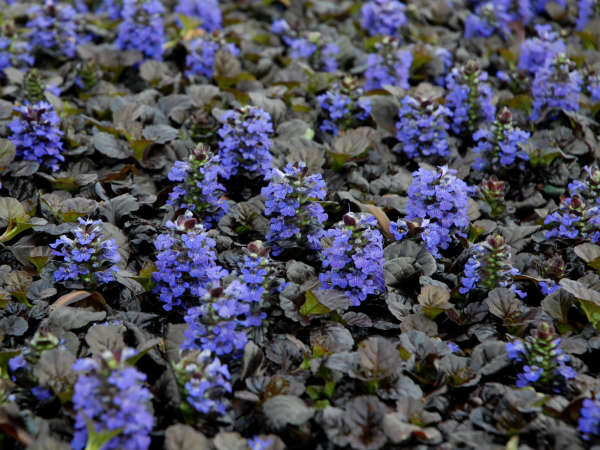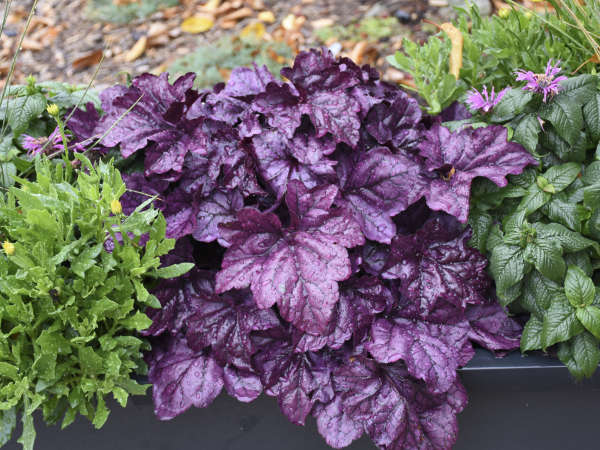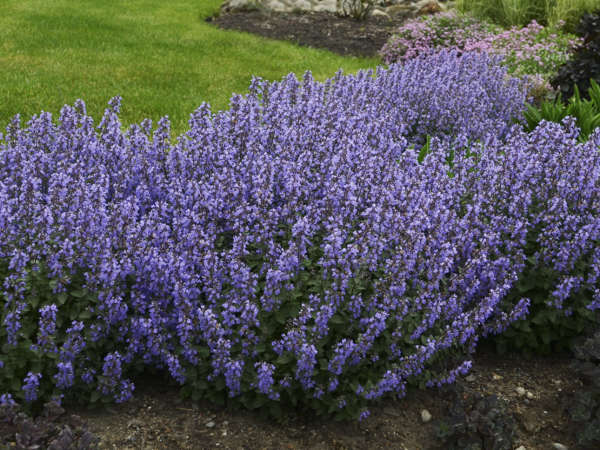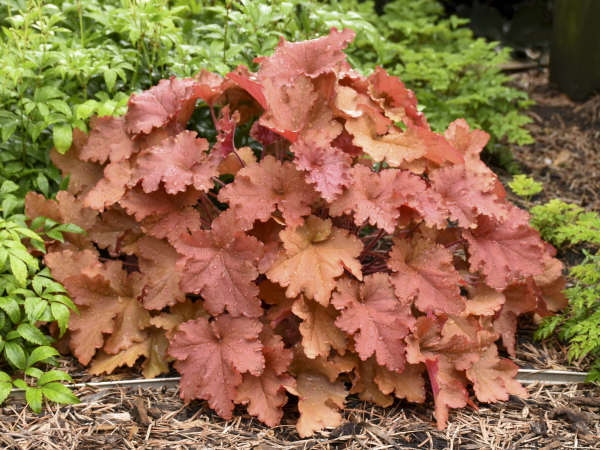Extremely Cold Hardy Perennials
-
1.
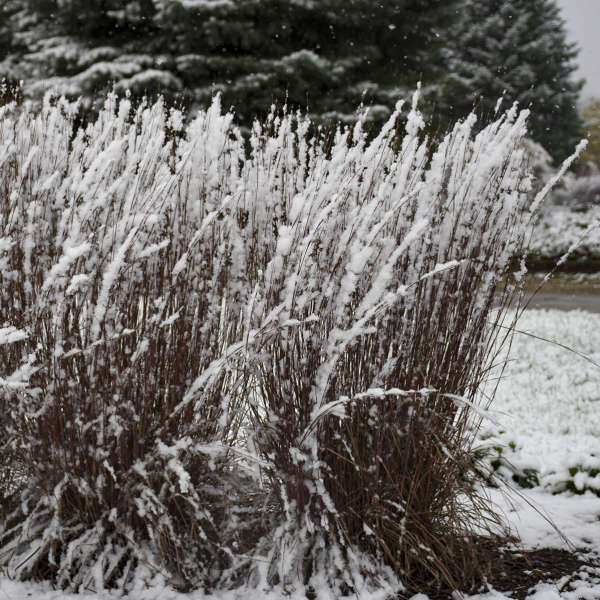
-
2.
Achillea (Yarrow)
Yarrow is one of the easiest perennials to grow and is a good choice for beginners. All it needs is full sun and well-drained soil. It thrives in average to poor soil and is drought tolerant once established. Plants grown in rich soil tend to be tall and floppy.
Variety Pictured: Achillea 'Firefly Sunshine'
Learn More

-
3.
Ajuga (Bugleweed)
Ajuga is an evergreen groundcover that can grow in the shade of large trees where grass is hard to establish. Unlike many perennials that are grown only for their flowers, ajuga is prized for its attractive, colorful foliage that looks nice all year.
Variety Picture: Ajuga reptans 'Burgundy Glow'
Learn More -
4.
Alcea (Hollyhock)
Hollyhocks provide excellent architectural height in the garden and make good backdrops for lower growing perennials. Try growing them in the cottage garden style by planting them up against a wall or picket fence. Though their stalks are very strong, they may need to be staked if they are planted in a windy site.
Variety Pictured: Alcea rosea 'Fiesta Time'
Learn More -
5.
Alchemilla mollis (Lady's Mantle)
Alchemilla mollis is a clump-forming perennial that spreads slowly by creeping rhizomes. It can be used as a groundcover, edging, or filler plant in the border. If it's happy where it's planted, this plant will reseed.
Variety Pictured: Alchemilla mollis
Learn More -
6.
Amsonia (Blue Star)
Amsonia adds a billowy, finely textured element to the landscape. It grows into a dense mass, much like a small shrub. The cool blue flowers can be useful in toning down adjacent flower colors.
Variety Pictured: Amsonia tabernaemontana 'Storm Cloud'
Learn More

-
7.
Andropogon gerardii (Big Bluestem)
Dubbed the “monarch of the prairie”, this native grass was once the dominant component of the American tallgrass prairie. It adapts easily to a wide range of soil and moisture conditions as long as full sun is provided. This long-lived grass has a variety of uses including screening, naturalizing, restoring prairies, and nesting materials for birds and mammals.
Variety Pictured: Andropogon gerardii 'Blackhawks'
Learn More -
8.
Anemone (Japanese Anemone)
A staple item for late summer and fall borders, Japanese Anenomes are graceful plants with beautiful, satiny flowers borne on tall stems above a clump of shorter basal foliage. Watching them sway in the breeze brings a feeling of calm and peace to the garden. Since they are a bit late to rise in the spring, they make an ideal cover for the dying foliage of spring bulbs.
Variety Pictured: Anemone FALL IN LOVE™ 'Sweetly'
Learn More

-
9.
Anthemis tinctoria (Golden Marguerite)
Anthemis is an excellent perennial for poor soil; it may become tall and leggy if grown in rich soil. This plant is ideal for a well-drained spot in full sun. Drought tolerant once established.
Variety Pictured: Anthemis tinctoria 'Charme'
Learn More -
10.
Aquilegia (Columbine)
Aquilegia is especially lovely when allowed to naturalize in shady, woodland borders. They also have excellent potential as cut flowers, lasting up to 2 weeks in a vase.
Variety Pictured: Aquilegia 'Origami Mix'
Learn More -
11.
Aralia cordata (Golden Japanese Spikenard)
This unique perennial grows best in part to light shade, though if given consistent moisture it can also grow in full sun. It prefers richly organic, deep loamy soil that is moist but well-drained. This plant is not drought tolerant. It typically dies back to the ground in winter and re-emerges in spring to quickly form a shrub-like clump.
Variety Pictured: Aralia cordata 'Sun King'
Learn More -
12.
Armeria maritima (Thrift, False Sea Pink)
As its name implies, Sea Pinks are found naturally along coastlines where few other plants can handle the high salt concentration. Inland, this attribute makes them useful for planting along sidewalks or driveways that are salted in winter. They are also good candidates for rock gardens, troughs, or between pavers.
Variety Pictured: Armeria maritima 'Bloodstone'
Learn More -
13.
Artemisia schmidtiana
An excellent choice for hot, dry sites, Artemisia should be grown in very well-drained soil and full sun. To avoid "melting out", it should be grown in poor soil and trimmed back in late spring to rejuvinate the foliage. This plant tends to open up in the center during hot summers, so it is best grown north of zone 7.
Variety Pictured: Artemisia schmidtiana 'Silver Mound'
Learn More -
14.
Aruncus (Dwarf Goat's Beard)
Though Aruncus tends to be a slow-gower the first couple of seasons, once it is established it puts on a fabulous show year after year. Make sure it has plenty of room to grow when you first plant it; transplanting this species is a very difficult task. This species is native to North America.
Variety Pictured: Aruncus 'Chantilly Lace'
Learn More

-
15.
Asclepias tuberosa (Butterfly Weed)
Gather bouquets of Asclepias all summer long; the long stems are wonderful for cutting and are long-lasting. Sear the ends of the cut stems over a flame to stop the milky sap from leaking out. Following the fabulous flowers, green fruits develop which rupture to reveal seeds with long, silvery-white, silky hairs reminiscent of its cousin, common milkweed. These are great to use in dried flower arrangements.
Variety Pictured: Asclepias tuberosa
Learn More -
16.
Athyrium (Japanese Painted Fern)
Athyrium grows best in moist soil with a neutral to moderately acidic pH. Partial to full shade is best. To protect the crowns and tender shoots in the spring, it is best to leave the old fronds on the plant over the winter.
Variety Pictured: Athyrium niponicum 'Crested Surf'
Learn More

-
17.
Baptisia (False Indigo)
Baptisia is easy to grow and will thrive with little maintenance. There are many potential applications in the landscape including meadow plantings, as a backdrop in borders, or as a specimen. Plants are very long-lived once established.
Variety Pictured: Baptisia 'Lemon Meringue
Learn More

-
18.
Brunnera macrophylla (Brunnera, Siberian Bugloss)
Brunneras are classic perennials that are treasured for their shade tolerance and lovely blooms. They make a fantastic groundcover, though the variegated forms may be slower to spread than the species. Try growing them in containers too so they will be close at hand when you want to snip a few blooms for a spring bouquet.
Variety Pictured: Brunnera macrophylla 'Jack of Diamonds'
Learn More

-
19.
Campanula (Bellflower)
The clustered, bell-shaped flowers bloom profusely atop the dark green foliage for a long period of time, beginning in late spring. Clustered Bellflower has been a longtime favorite of cottage gardens, attracting butterflies and resisting deer.
Variety Pictured: Campanula carpatica 'Violet Teacups'
Learn More
-
20.
Clematis (Bush Clematis)
Clematis can be grown in full sun or light shade, but its base and roots must be completely shaded. You may need to plant something directly in front of its rootball to keep it cool and shaded. A thick layer of mulch will also help to keep the soil moist. Bush Clematis prefers to be grown in average, well-drained, slightly alkaline soil. Adding lime to the soil will help to provide these conditions if your soil is naturally acidic.
Variety Pictured: Clematis 'Stand By Me'
Learn More

-
21.
Convallaria majalis (Lily of the Valley)
Despite the dainty appearance of the blossoms, Convallaria is actually a tough, vigorous groundcover. Use it to cover slopes and riverbanks or in shady woodland sites, even under trees.
Variety Pictured: Convallaria majalis
Learn More -
22.
Delphinium (Hybrid Bee Delphinium)
Delphiniums thrive in the cooler climates of the north country, though they will grow as far south as zone 7. They grow best in rich, well-drained soil with a basic pH. If your soil is naturally acidic, adding lime will help to provide these conditions. They are also heavy feeders. The addition of compost or manure to the soil as well the use of granular fertilizer will result in healthier, stronger plants.
Variety Pictured: Delphinium elatum 'Million Dollar Sky'
Learn More -
23.
Echinacea (Coneflower)
Praised for their cheerful brightly colored flowers, coneflowers are a mainstay in today's garden. Be sure to leave some spent blooms on the plants in the fall because their seeds provide winter food for finches and other birds. The dried seed heads also provide architectural interest in the winter.
Variety Pictured: Echinacea 'Orange You Awesome'
Learn More

-
24.
Echinops bannaticus (Globe Thistle)
These distinctive flowers rise above the showy silvery green foliage. Though they look prickly, they are not as rough to the touch as you might expect. Echinops makes a great cut flower or dried everlasting. They add a unique element to any arrangement and are becoming more popular with florists every year.
Variety Pictured: Echinops bannaticus 'Blue Glow'
Learn More -
25.
Gaillardia (Blanket Flower)
These perennials require little care once established. They are heat tolerant and actually prefer to be grown in poorer soils. They get their name from the manner in which they used to blanket North American prairies with their blooms. They can still be found in fields and along roadsides in the prairie region and into the Rockies.
Variety Pictured: Gaillardia aristrata 'Arizona Sun'
Learn More -
26.
Gypsophila paniculata (Baby's Breath)
Baby's Breath has long been valued as a filler plant in perennial border gardens and also as a long-lasting cut flower. It makes the perfect cover up for dying bulb foliage or for perennials, such as poppies or bleeding hearts, that go dormant in summer. Baby's Breath also makes an excellent dried flower.
Variety Pictured: Gypsophila paniculata FESTIVAL STAR®
Learn More
-
27.
Helictotrichon sempervirens (Blue Oat Grass)
Blue Oat grass looks like a miniature water fountain, with its densely packed leaves gently spraying upward and arching back downward at the tips. This species displays spiky, blue-gray foliage that will draw your attention all season long. Blue Oat Grass adds a wonderful coarse element to rock gardens, coastal gardens, or dry hillsides.
Variety Pictured: Helichtotrichon sempervirens
Learn More -
28.
Heliopsis helianthoides (False Sunflower)
Heliopsis is an excellent tall perennial for the back of the flower border. It has a bushy, well-branched form and glossy, deep green, triangular leaves. It's a real workhorse in the garden!
Variety Pictured: Heliopsis helianthoides 'Tuscan Sun'
Learn More

-
29.
Hemerocallis (Daylilies)
One of the most common and most cultivated perennials, there are thousands of different varieties of daylilies coming in just about every size shade and color(except blue!). Daylilies can survive many harsh conditions that other plants cannot including: polluted city environments, slopes, poor and dry soils, near pavement that is salted in winter, and under Black Walnut trees.
Variety Pictured: Hemerocallis 'Orange Smoothie'
Learn More

-
30.
Hibiscus (Herbaceous Hibiscus)
Hibiscus love the sun and need moist, well-drained soil. Keeping these plants watered will result in larger flowers and lush foliage. Deadheading will improve the appearance of the plant. It is best to plant Hibiscus in the garden before the heat of the summer arrives, and should be heavily mulched the first winter. In spring, cut back any remaining stems before new growth appears. A strong pair of loppers or a saw will be necessary to cut this plant back. Be advised that Hibiscus is always one of the last perennials to emerge in spring. Its vigorous growth rate more than makes up for this late start, however.
Variety Pictured: Hibiscus SUMMERIFIC® 'Evening Rose'
Learn More

-
31.
Hosta
Hostas are exceedingly popular perennials in today's gardens due to their versatility in the landscape. Their subtle colors, tall flower scapes, and broad, coarse leaves fill a niche in garden designs that few other plants can achieve. Their large leaves provide excellent coverage for dying bulb foliage. Hostas also grow well in city environments where the air may be polluted by car exhaust, etc.
Variety Pictured: Hosta SHADOWLAND® 'Hudson Bay'
Learn More
-
32.
Iberis sempervirens (Evergreen Candytuft)
An old-time favorite, Candytuft is a charming plant for perennial gardens. Because of its drought tolerance, it makes a great filler for crevices in walls or between the stones of walkways. It is also effective as edging or groundcover.
Variety Pictured: Iberis sempervirens 'Alexander's White'
Learn More -
33.
Iris sibirica (Siberian Iris)
Siberian irises are haled for their elegant, delicate flowers and disease resistance. They perform admirably in the sunny to partially shady garden, but need plenty of water throughout the season to continue looking their best. In naturalized settings, they are particularly effective around water features. They can also be grown under Black Walnut trees since they are not effected by juglone. Siberian Irises bloom before Japanese Irises but after Tall Bearded Irises.
Variety Pictured: Iris sibirica 'Swans in Flight'
Learn More -
34.
Liatris spicata (Gayfeather, Blazing Star)
All together, Liatris is a very strong vertical accent for the garden. It is a staple item for cutting gardens; it adds a bright, vertical element to bouquets.
Variety Pictured: Liatris spicata 'Kobold Original'
Learn More -
35.
Lychnis arkwrightii (Maltese Cross)
It is essential to provide proper siting for this perennial. Plant it in full sun and moist, well-drained soil to avoid potential disease issues. Early in the season, pinch these plants back to encourage a more compact habit. Lychnis tends to be a short-lived perennial, but it will self-seed.
Variety Pictured: Lychnis arkwrightii 'Orange Gnome'
Learn More -
36.
Matteuccia struthiopteris (Ostrich Fern)
Ostrich ferns need plenty of space to grow since they are rapid spreaders. They spread by dense underground runners which extend out in all directions, quickly forming colonies.
Variety Pictured: Matteuccia struthiopteris
Learn More -
37.
Nepeta faassenii (Catmint)
Nepetas are easy to grow perennials that provide a beautiful show of color all summer long. They prefer to be planted in full sun and ordinary, well-drained soil. When Nepeta's stems are broken, they release an aroma into the air that tends to attract cats, thus its common name, Catmint.
Variety Pictured: Nepeta 'Cat's Pajamas'
Learn More

-
38.
Paeonia (Garden Peony)
Peonies are classic garden plants that add a bit of nostalgia and charm to the garden. Their fragrant blooms and lush foliage have made them popular for years, and with the recent resurgence in breeding, they will continue to improve. Peonies are simple to grow and can be utilized in many ways, including mass plantings, specimens, or hedges. By choosing a mixture of early, midseason, and late blooming varieties, you can have blooms for up to 6 weeks.
Variety Pictured: Paeonia 'Karl Rosenfield'
Learn More -
39.
Papaver (Oriental Poppy)
In the center of a poppy's flower rests a very large, velvety-black seed capsule surrounded by prominent, dark purple stamens. Altogether, these flowers absolutely steal the show when they are in bloom. After the bloom cycle is completed however, these perennials will go dormant, so plan on planting other plants nearby to fill in the gaps.
Variety Pictured: Papaver orientalis 'Royal Wedding'
Learn More -
40.
Penstemon (Beardtongue)
Penstemons should be grown in full sun and very well-drained soil. Use Penstemons in the border, for naturalizing, and for cut flowers.
Variety Pictured: Penstemon 'Midnight Masquerade'
Learn More

-
41.
Phlox paniculata (Tall Garden Phlox)
Phlox paniculata is unequaled for showy blooms over a long period throughout the summer. Though they are some of the most popular perennials available, they do require some maintenance to sustain their health and vigor.
Variety Pictured: Phlox paniculata 'Glamour Girl'
Learn More
-
42.
Phlox subulata (Creeping Phlox)
Creeping phlox is a low-growing species which forms a carpet-like mat no taller than 6". This popular little perennial is best utilized in rocky areas, on slopes, and in flower borders.
Variety Pictured: Phlox subulata 'Eye Candy'
Learn More
-
43.
Platycoden (Balloon Flower)
Platycodons are easy, trouble-free perennials that thrive in almost any soil as long as it is well-drained. They can easily adapt to grow in either full sun or part shade. Be patient in the spring, as this genus is slow to emerge. Cut the whole plant back after the first hard frost.
Variety Pictured: Platycodon 'Astra Double Blue'
Learn More -
44.
Polygonatum odoratum (Variegated Solomon's Seal)
Solomon's Seal is a natural plant for the shady woodland garden, even tolerating heavy shade. Deep, rich, moist soil is best. Solomon's Seal is sometimes slow to establish itself, but is very long-lived and easy to maintain once it does.
Variety Pictured: Polygonatum odoratum 'Ruby Slippers'
Learn More
-
45.
Pulmonaria (Lungwort, Bethlehem Sage)
Pulmonaria is an underused perennial that grows well in shady gardens. It is especially attractive when planted among hostas, ferns, and brunneras. Its flowers are among the most brilliantly colored blossoms of all perennials.
Variety Pictured: Pulmonaria 'Pretty in Pink'
Learn More
-
46.
Salvia (Garden Sage)
Salvia is easy to grow in almost any climate. Though it is drought tolerant, it will bloom better with regular watering. Deadheading encourages a longer bloom time. If plants get leggy during the season, cut them all the way back to the newly developed foliage. If cut back, plants may rebloom in fall but often the flowers are fewer and smaller.
Variety Pictured: Salvia nemorosa 'Pink Profusion'
Learn More

-
47.
Saponaria ocymoides (Rock Soapwort)
Saponaria is a sprawling plant which forms a nice carpet of semi-evergreen foliage. Small sprays of pink flowers appear prolifically in early summer. It works well in a rock garden, as a groundcover, or between stepping stones on a path. The common name, Soapwort, refers to the sap from the roots of S. officinalis which was once used to make soap.
Variety Pictured: Saponaria ocymoides
Learn More -
48.
Scabiosa columbaria (Pincushion Flower)
Scabiosa grows best in average soil and full sun. Good drainage is essential for the health of the plants. Deadheading will promote a longer blooming period. In the fall, cut back any flowering stems to help the plants prepare for winter.
Variety Pictured: Scabiosa columbaria 'Butterfly Blue'
Learn More -
49.
Schizachyrium scoparium (Little Bluestem)
Schizachyrium is a great choice if you are looking to restore an eroded site, or for a plant that will grow in hot, dry areas where other plants have a hard time surviving.
Variety Pictured: Schizachyrium scoparium PRAIRIE WINDS® 'Blue Paradise'
Learn More

-
50.
Sedum (Stonecrop)
Tall, upright sedums form substantial clumps of foliage which can be substituted for shrubs in the landscape. Their stout, sturdy stems support the massive flower heads which develop in summer and burst into bloom in fall. If left standing, they provide winter interest and food for birds.
Variety Pictured: Sedum ROCK 'N GROW® 'Lemonjade'
Learn More

-
51.
Sempervivum (Hen & Chicks)
Sempervivum is comprised of one large rosette called the "hen" which sprouts many smaller rosettes around it called "chicks". As the plants age, the "hen" may die out and be replaced by the "chicks". Plants can be divided easily at any time by pulling up some of the "chicks" and replanting them elsewhere. This plant is particularly effective when planted in the cracks and crevices of stone walls or walkways. It is also very attractive in containers.
Variety Pictured: Sempervivum 'Ruby Heart'
Learn More -
52.
Sporobolus heterolepis (Prairie Dropseed)
This grass is very heat and drought tolerant because it is deep rooted. It is often planted en masse as a groundcover or as a specimen. Prairie Dropseed is native to North American prairies and occurs naturally from Canada to Texas. Much of it has been destroyed by overgrazing and farming, so now it is only found in undisturbed prairies. Native Americans once used its seeds to make flour. This plant gets its name from the way the tiny mature seeds drop to the ground in the fall. Birds and other wildlife depend on this plant as a nutritious food source.
Variety Pictured: Sporobolus heterolepis
Learn More -
53.
Thymus praecox (Creeping Thyme)
Creeping thyme is native to hot, dry Mediterranean regions. Consequently it thrives in similar conditions in American gardens. Plant it in full sun and moderately fertile, average to dry, well-drained soil.
Variety Pictured: Thymus praecox 'Coccineus'
Learn More -
54.
Tradescantia (Spiderwort)
Tradescantia is adaptable to many types of soil as long as it is moist and well-drained. It will grow in any amount of sunlight, from full sun to full shade.
Variety Pictured: Tradescantia 'Charlotte's Web'
Learn More

-
55.
Trollius chinensis (Globeflower)
Trollius is a wonderful addition to any sunny or partially shaded, moist area such as the edges of ponds or streams.
Variety Pictured: Trollius chinensis 'Golden Queen'
Learn More
